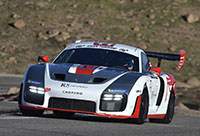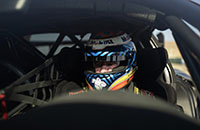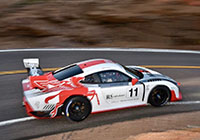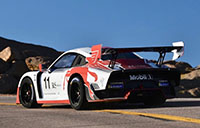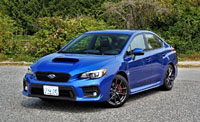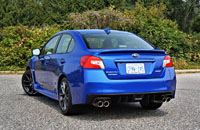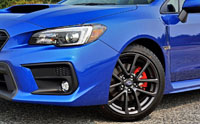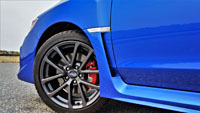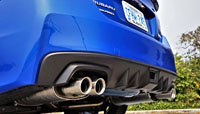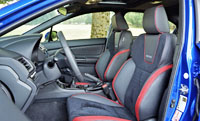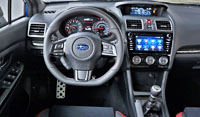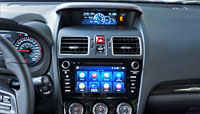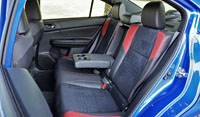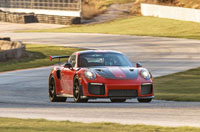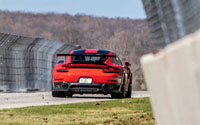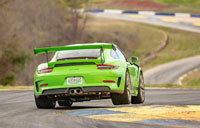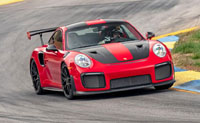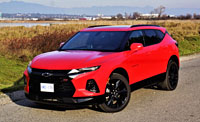
I want a new Blazer. Yah, you heard me right. There’s just one problem. The Blazer I want is a 4×4-capable compact/mid-sizer capable of going toe-to-toe with Ford’s new Bronco and Jeep’s legendary Wrangler, not an all-wheel drive soft-roader designed primarily for hauling kids. Fortunately for Chevy, most buyers want the latter, resulting in the new Blazer crossover being very popular.
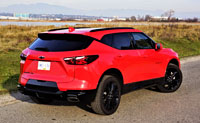
Granted, General Motors’ best-selling bowtie brand would’ve had a hit on its hands if they’d called it something else, like Malibu X. Ok, that last comment, while mostly true, was a jab right into the solar plexus of the just-noted blue-oval brand that once did something near identical with its mid-size Taurus nameplate, which just happened to share underpinnings with their renamed Freestyle crossover SUV. In all seriousness, though, I would’ve rather seen Chevy bring out a new Colorado-based SUV wearing the Blazer badge than anything riding on the back of GM’s mid-size platform (although the Blazer’s C1XX architecture is actually a somewhat modified crossover variant of the Malibu’s E2XX platform). Now, if GM has a change of heart, wanting to take advantage of rough and rugged 4×4 popularity, they won’t be able to use the classic Blazer nameplate. At least Jimmy is still available for GMC.
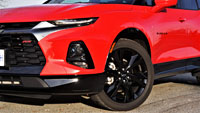
The General has made a lot of mistakes in the past and this latest misnomer may one day be perceived as a significant missed opportunity that simultaneously sullied a once-great name, but for now the majority of thirty- to forty-something parents buying this new five-seat Chevrolet will be happy it looks like a bulked-up Camaro (and wasn’t actually named Camaro… ahem, another knock on Ford that dubbed its two-row crossover SUV the Mustang Mach-E) and leave it at that.
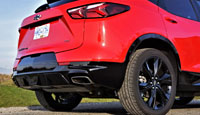
The RS I spent a week with is the most Camaro-like trim of the lot, particularly in red. Like it or lose it, this SUV is an attention-getter. This said, no one should expect its rectangular dual exhaust to bark like a ZL1, let alone an LT1 with the upgraded V6. What’s more, the Blazer’s spin on Chevy’s 3.6-litre V6 doesn’t put out the Camaro’s 335 horsepower and 284 lb-ft of torque either, but in this fairly staid consumer-driven category its 308 horsepower and 270 ft-lb of torque is impressive. It manages a zero-to-100 km/h sprint of 6.5 seconds too, and while this is half-a-second off Ford’s Edge ST, at least the Chevy looks quicker.
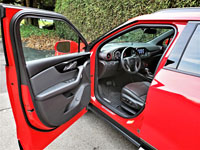
The Blazer boasts an extra forward gear as well, counting in at nine compared to eight for Ford’s mid-size alternative, while both use all-wheel drive systems that are best kept on pavement, or light-duty gravel at worst.
Not all Blazers receive this upmarket V6, by the way, with lesser trims incorporating GM’s 2.0-litre turbocharged four-cylinder that also comes in the base Camaro. Can you see a pattern here? Like the V6, the base Blazer’s output is detuned from the sporty muscle car’s, making 227 horsepower and 258 lb-ft of torque instead of a respective 275 and 295, but that’s better than the U.S.-spec base model’s naturally-aspirated 2.5-litre engine that only manages 193 literal ponies and 188 lb-ft (ok, they’re not literal ponies, but they’re much smaller horses). As for the Edge, it’s base 2.0-litre turbo-four makes 250 horsepower and 275 lb-ft of torque in both markets, which is what we’d call competitive.
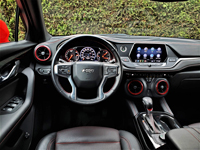
The Blazer’s nine-speed autobox mentioned a moment ago doesn’t include steering column-mounted paddle shifters, even in this sporty RS trim line, but Chevy does include a thumb-controlled rocker switch directly on the shift knob, which isn’t any more engaging than pushing a gear lever to and fro. At least the transmission is a soothingly smooth shifter, if not particularly quick about the job at hand. Yes, once again this Blazer RS is no Camaro crossover, in spirit at least, but it’s highly unlikely the majority of its buyers would drive it like it was stolen, so it’s probably a moot point.

More importantly, this SUV is easy on fuel. Chevy claims estimated mileage of 13.1 L/100km city, 9.4 highway and 11.4 combined for this V6-powered version, achievable because its part-time all-wheel drive system pushes all of its power to the front wheels when extra traction isn’t required. When needed, simply rotate a console-mounted knob from x2” to “x4” and Bob’s your uncle. The same dial can be used to select sport mode as well, or for that matter a towing mode.
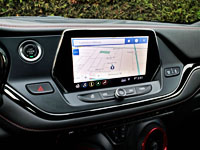
With the former mode chosen, the Blazer RS really moves off the line, almost completely fulfilling the promise made by its fast-when-standing-still styling. If only the nine-speed automatic’s response to shifts was quicker, the smooth and comforting transmission needing more than two seconds to set up the next shift. I suppose it’s more fun to row through the gears than the majority of CVTs, but only just. It kicks down well enough for passing procedures, and there’s plenty of power and torque afoot, so the engine makes up for the gearbox once engaged. Even better, the Blazer RS handles.
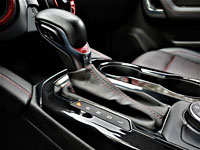
Yup, this SUV can snake through corners with ease, with some thanks to the sizeable 265/45R21 Continental CrossContact all-season tires attached to the ground below. I made a point of seeking out some favourite curving riverside two-laners and a relatively local mountainside switchback to be sure of its capabilities, and was rewarded with confidence-inspiring poise under pressure. Even when pushing harder than I probably should have, the Blazer never deviated from my chosen lane and hardly seemed to lean much at all. Even more important in this class, suspension compliancy was just right, always smooth and comfortable and never harsh.
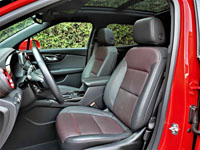
Comfort’s where it’s at in this mid-size SUV segment, and to that end Chevy has done a good job finishing off the Blazer RS interior. Style-wise it’s no walnut-laden, camel-coloured leather luxury ute, but instead once again does its best impersonation of a tall, five-seat Camaro. Of course, I only mean that when it comes to interior design, as this Chevy RS is a lot more utile than any 2+2 muscle car, thanks to generous front and rear seat room for all sizes in all seating positions. It’s cargo area is accommodating too, complete with 60/40 split-folding rear seatbacks to expand on its usefulness when needed.
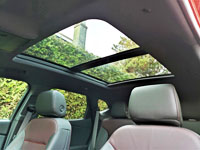
As far as luxury accoutrements go, Chevy made sure to infuse the cabin with padded surfaces aplenty. Most composites and leathers were in a dark anthracite bordering on black, with red being the highlight colour, as if you couldn’t have guessed without looking inside. I say most composites because the design team chose to ring each dash-mounted air vent with a red bezel, the bright splash of colour at least not clashing with the red and blue heating and cooling arrows positioned nearby. There’s a tiny drop of red plastic on the gear shift lever too, providing a backdrop to the “RS” logo, and no shortage of red thread throughout the rest of the cabin, not to mention some red dye visible through the leather seats’ perforations. It all looks appropriately sporty, with fit, finish and materials quality that matches most others in the segment.
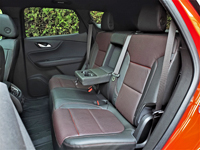
I will give a special nod to Chevy’s mostly digital primary gauge cluster and centre-mounted infotainment display, however, which are a touch above most rivals. The former, which includes an 8.0-inch multi-information display at centre, features stylish, tasteful graphics and plenty of bright colours, plus clear, high-resolution screen quality, and a solid collection of useful functions. Over to the right, the infotainment display is a touchscreen for easy use, especially when using smartphone/tablet-like tap, swipe and pinch finger gestures, and once again its graphically attractive and filled with functions, such as Android Auto, Apple CarPlay, accurate navigation, a good backup camera, etcetera.
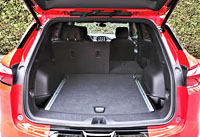
The RS comes equipped with some other notable features too, such as a big panoramic glass sunroof up above, a heated steering wheel rim and heatable front seats, dual-zone automatic climate control, a hands-free powered liftgate, a sportier front grille, and 99.9-percent of its exterior chrome trim replaced by glossy black (the “RS” logo gets trimmed in metal brightwork for tradition’s sake).
After everything is said and done, Chevy’s Blazer RS will either make you race over to the brand’s website to deliberate over colours before checking out local dealer sites in order to see what’s in stock, or leave you questioning how the heartbeat of America could’ve missed such a great opportunity to bring back a real off-road capable SUV. Sure you can still step up to a full-size Tahoe or Suburban, both worthy 4x4s in their own rights, but something smaller to compete with the Broncos, Wranglers and even the Toyota 4Runners of the world would’ve been nice… and smart.
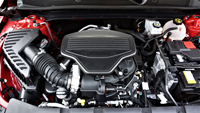
As it is, the 2021 Blazer RS starts at $46,698 plus freight and fees, whereas a base Blazer LT can be had for $37,198. Take note that our 2021 Chevrolet Blazer Canada Prices page was showing up to $1,000 in additional incentives at the time of writing, while CarCostCanada members are saving an average of $3,625 after using our dealer invoice pricing info when negotiating their best deal. CarCostCanada members are also privy to information about manufacturer financing and leasing deals, plus they get the latest news on factory rebates. Make sure to learn more about how the CarCostCanada system works, and remember to download our free app so you can have everything you need at your fingertips before walking into a new car showroom.
Story and photos by Trevor Hofmann

